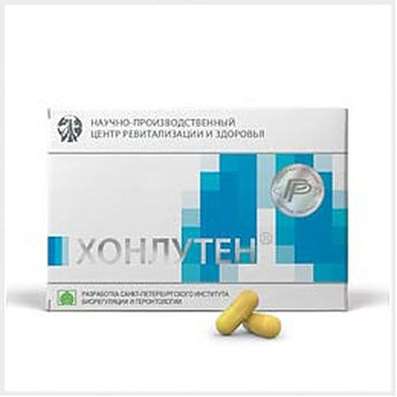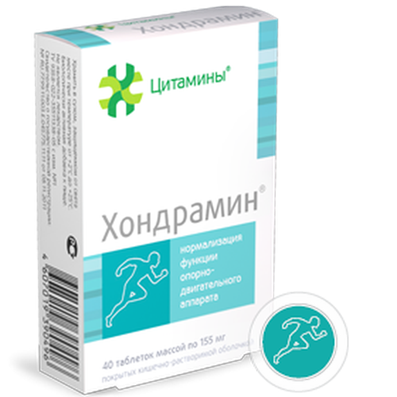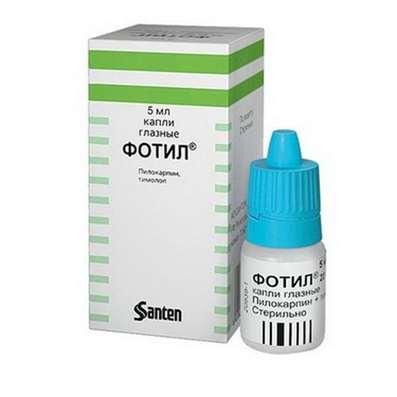Instruction for use: Methylprednisolone aceponate + Carbamide (Methylprednisoloni aceponas + Urea pura)
I want this, give me price
Pharmacological group
Glucocorticosteroids in combinations
Nosological classification (ICD-10)
L20 Atopic dermatitis
Itchy atopic eczema, Common neurodermatitis, Allergic skin diseases, Allergic skin diseases of non-infectious etiology, Allergic skin diseases of non-microbial etiology, Allergic skin diseases, Allergic skin lesions, Allergic manifestations on the skin, Allergic dermatitis, Allergic diathesis, Allergic itching dermatosis, Allergic Skin Disease, Allergic skin irritation, Dermatitis allergic, Atopic dermatitis, Dermatosis allergic, Diathesis exudative, Skin Allergic Disease, Skin allergic reaction to medicinal and chemical preparations, Skin reaction to medication, Skin and allergic disease, Acute eczema, Chronic atopic dermatitis, Exudative diathesis, Itching allergic dermatosis
L20.8 Other atopic dermatitis
Constitutional neurodermatitis, Chronic neurodermatitis, Restricted neurodermatitis, Allergic eczema, Atopic eczema, Children's eczema, Diffuse neurodermatitis, Neurodermatitis, Neurodermatitis diffuse, Neurodermatitis limited, Neurodermatitis, Dermatosis of a neurogenic origin
L23 Allergic contact dermatitis
Allergic dermatitis, Purulent allergic dermatopathies, Contact allergic reaction, Contact allergic dermatitis, Photoallergic contact dermatitis
L24 Simple irritant contact dermatitis
Simple contact dermatitis
L30.1 Dyshidrosis [pomfolix]
Skin dyshidrosis, Pomfolix, Eczema dysgidrotic, Dyshidrotic eczema, Infected dyshidrosis, Dyshidrosis, Dyshidrotic dermatitis
L30.3 Infectious dermatitis
Microbial skin infections, Dermatitis with concomitant bacterial infections, Dermatitis in the presence of a bacterial infection or suspected of it, Infected eczema of external auditory canal, Secondarily infected dermatosis, Erythema migrans, Secondarily infected dermatoses , Dermatitis re-infected, Infectious dermatitis, Dermatitis infected, Dermatoses complicated by a secondary infection, Dermatoses complicated by primary and secondary infection, Dermatoses complicated by primary and / or secondary infection, Infected eczema, Infected dermatitis, Infected dermatosis, Migrating erythema, Microbial eczema, Chronic migratory erythema, Eczema is infected, Erythema Migrating, Bacterial dermatitis, Erythema migratory chronic, Superinfectant dermatitis, Necrolytic Migrating erythema
L30.9 Dermatitis, unspecified
Allergic dermatoses complicated by a secondary bacterial infection, Anal eczema, Bacterial maturation, Varicose Eczema, Venous dermatitis, Inflammation of the skin, Inflammation of the skin upon contact with plants, Inflammatory Skin Diseases, Inflammatory skin reactions, Inflammatory processes of the skin, Hypostatic dermatitis, Fungal Eczema, Fungal dermatosis, Dermatitis, Dermatitis is stagnant, Dermatitis and eczema in the anal area, Dermatitis acute contact, Perianal dermatitis, Dermatosis, Dermatosis of the scalp, Dermatosis of psoriasis, Dermatosis with persistent itching, Dermatoses, Dermatoses itchy, Other itching dermatoses, Significant eczematous manifestations, Itching with, dermatoses, Itching eczema, True eczema, Skin reaction to insect bites,Skin itching with dermatosis, Constitutional eczema, Weeping eczema, Drowsing inflammatory skin disease, Dying Infectious-Inflammatory Skin Disease, Non-allergic dermatitis, Nummular eczema, Acute contact eczema, Acute inflammatory skin disease, Acute dermatosis, Acute severe dermatosis, Perianal dermatitis, Superficial dermatosis, Subacute Contact Eczema, Simple dermatitis, Occupational dermatitis, Psychogenic dermatosis, Bubble dermatitis of newborns, Pustular eruptions, Irritation and redness of the skin, Low-flammable eczema, Dry atrophic eczema, Dry eczema, Toxic dermatitis, Ear eczema like dermatitis, Chronic eczema, Chronic dermatosis, Chronic common dermatosis, Scaly papular dermatosis, Eczema, Eczema anal region, Eczema of the hands, Eczema Contact, Eczema lichenized, Eczema Nummular, Eczema acute, Eczema acute contact, Eczema subacute, Eczematous dermatitis, Eczema-like rashes, Ecome exogenous, Endogenous eczema, Gluteal dermatitis, Restricted itchy dermatitis
Pharmacology
Pharmacological action - keratolytic, glucocorticoid (local).
Pharmacodynamics
Combined drug, the effect of which is due to its constituent components.
Methylprednisolone aceponate - is a non-halogenated synthetic steroid. With external use of methylprednisolone, aceponate suppresses inflammatory and allergic skin reactions, as well as reactions associated with increased proliferation, which leads to a decrease in the objective symptoms of inflammation (erythema, edema, mocclusion) and subjective sensations (itching, irritation, pain, etc.). ).
When applying methylprednisolone aceponate externally at the recommended dose, the systemic effect is minimal in both humans and animals. After repeated application of methylprednisolone aceponate on large surfaces (40-60% of the skin surface), as well as with application to the occlusal bandage, there are no abnormalities of the adrenal glands: the level of cortisol in the plasma and its circadian rhythm remain within normal limits, a decrease in the concentration of cortisol in the daily urine Occurs. Methylprednisolone aceponate (especially its main metabolite - 6α-methylprednisolone-17-propionate) binds to intracellular glucocorticoid receptors. The steroid-receptor complex binds to certain DNA regions (deoxyribonucleic acid) of immune response cells, thus causing a series of biological effects. In particular, binding of the steroid-receptor complex to the DNA of the immune response cells results in the induction of macrocortin synthesis. Macrocortin inhibits the release of arachidonic acid and thereby the formation of inflammatory mediators such as PG (prostaglandins) and leukotrienes.
Inhibition of glucocorticosteroid synthesis of vasodilating PG and potentiation of vasoconstrictive action of epinephrine lead to vasoconstrictor effect.
Urea - has keratolytic and moisturizing effects. Urea contributes to the binding of water and as a result - to soften the horny layer of the skin. In addition to keratolytic action, urea has proteolytic activity.
Pharmacokinetics
When topical application of methylprednisolone, the aceponate is hydrolyzed in the epidermis and dermis. The main and most active metabolite is 6α-methylprednisolone-17-propionate, which has a much higher affinity for glucocorticosteroid skin receptors, indicating its "bioactivation" in the skin.
The degree of percutaneous absorption depends on the condition of the skin and the way it is used (with or without occlusive dressing).
Percutaneous absorption in patients with atopic dermatitis (neurodermatitis) and psoriasis is no more than 2.5%, which is only slightly higher than that of healthy volunteers (0.5-1.5%).
After entering the systemic bloodstream, 6α-methylprednisolone-17-propionate is rapidly conjugated to glucuronic acid and thus inactivated.
Metabolites of methylprednisolone aceponate are eliminated mainly by kidneys with T1 / 2 for about 16 hours. Methylrednisolone Aceponate and its metabolites are not cumulative in the body.
Due to the low absorption of urea with topical application, the probability of its systemic effects is low.
Application of Methylprednisolone aceponate + Urea
Inflammatory skin diseases, sensitive to therapy with topical glucocorticosteroids and accompanied by a violation of keratinization: atopic dermatitis, neurodermatitis; True eczema; Microbial eczema; Simple contact dermatitis; Allergic (contact) dermatitis; Dyshidrotic eczema.
Contraindications
Hypersensitivity; Tuberculosis or syphilitic processes in the field of drug application; Viral diseases (eg chicken pox, shingles); Rosacea, perioral dermatitis in the area of drug application (drug); Areas of skin with manifestations of response to vaccination; Children's age till 18 years.
pregnancy and lactation
If you need to use during pregnancy and lactation, you should carefully weigh the potential risk to the fetus and the expected benefit of treatment for the mother. During these periods, long-term use of drugs on extensive skin surfaces is not recommended.
Nursing mothers should not apply drugs to the mammary glands.
Side effects
Very rarely (less than 0.01% of cases), local reactions can occur, such as itching, burning, erythema, the formation of a vesicle rash.
If drugs are used for more than 4 weeks and / or on an area of 10% or more of the body surface, the following reactions may occur: skin atrophy, telangiectasia, striae, acneiform skin changes, systemic effects due to absorption of GCS (glucocorticosteroids).
In rare cases (0.01-0.1%), folliculitis, hypertrichosis, perioral dermatitis, depigmentation of the skin, allergic reactions to one of the components of the drug can be observed.
Interaction
Interaction with other drugs has not been identified, but it should be borne in mind that the simultaneous use of a combination of methylprednisolone aceponate + urea with other ointments or creams may lead to increased resorption of the medicinal substances entering into their composition.
Overdose
In the study of the acute toxicity of methylprednisolone aceponate, there was no risk of acute intoxication with excessive single-dose skin application (application of the drug over a large area under conditions favorable for absorption) or unintentional ingestion.
If the SCS is excessively long and / or intensive, skin atrophy can develop (thinning of the skin, telangiectasia, striae).
When there are signs of skin atrophy, drugs should be discarded.
With topical application of urea, an overdose is unlikely.
Routes of administration
Outwardly.
Precautions
In the presence of bacterial complications and / or dermatomycosis, in addition to therapy with a combination of methylprednisolone aceponate + urea, it is necessary to carry out specific antibacterial and / or antimycotic treatment.
The combination of methylprednisolone aceponate + urea is not intended for use in ophthalmology. Avoid contact with eyes and mucous membranes. As with the use of systemic GCS, after external application of GCS glaucoma may develop (for example after using large doses, due to the very long application of occlusive dressings or after application to the skin around the eyes).
On the skin of the face more often than on other surfaces of the body, after prolonged treatment of the local SCS, atrophic changes may appear.
Influence on ability to drive vehicles, mechanisms. Not found.

 Cart
Cart





